Silver filigree
Often, jewelry in the filigree technique is a complete work. For us, a filigree is one of the stages of the workflow, a kind of basis for the future product. In the dishes we use an openwork filigree - stained-glass enamel is laid in it. In frames for icons -solder filigree, which is then covered with hot cloisonne enamel.
Thanks to the filigree, its tracery, subtlety and lightness, we can very carefully and artistically display a drawing or ornament, conveying all the nuances that the artist intended. In this case, the filigree is a thin but strong partition in the enamel pattern.
Creating a filigree is manual labor, which is the most valuable and important thing for our workshop.For a complete understanding, we will describe the process of working with the filigree in the workshop.
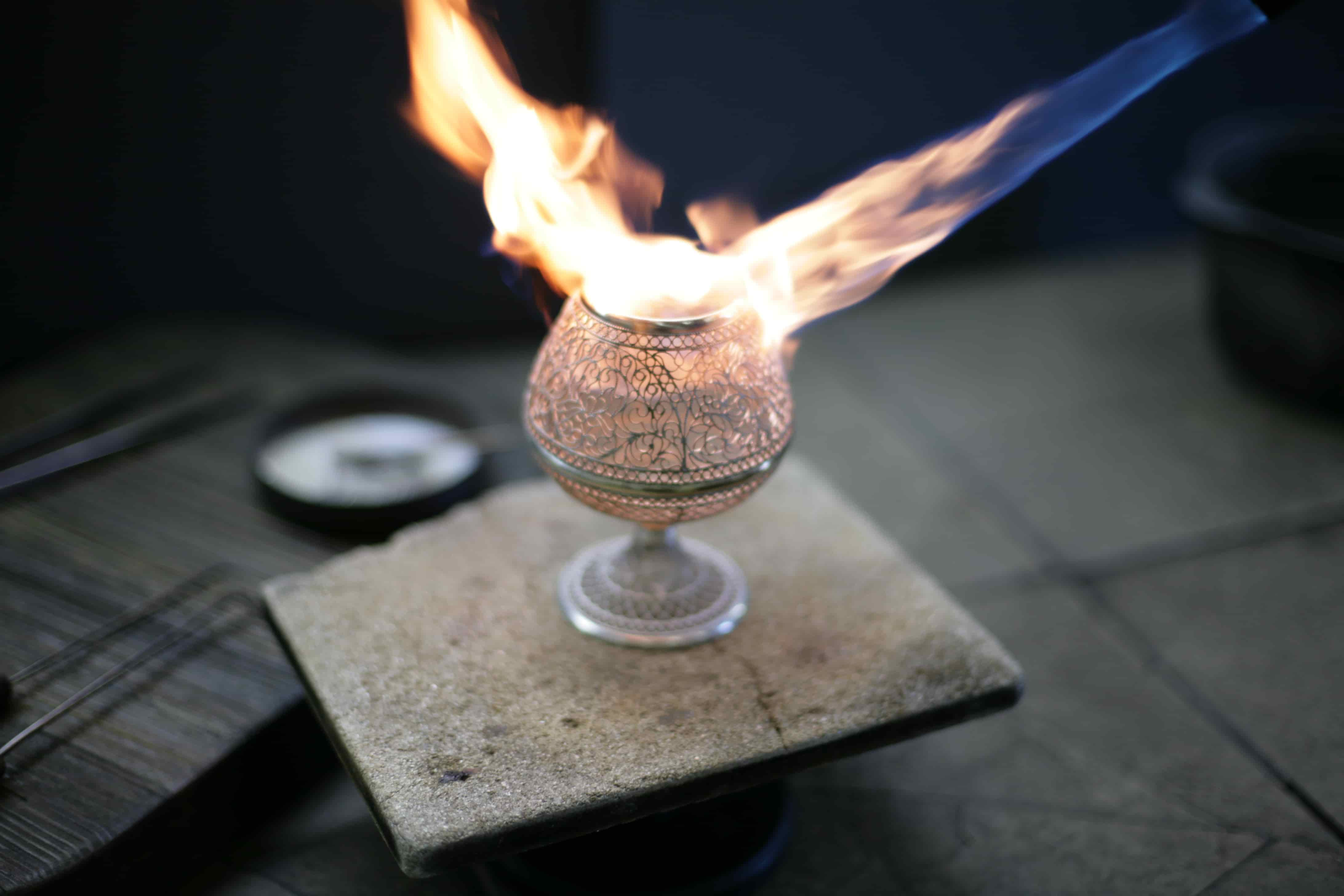
At the beginning, the preparatory process for creating the filigree itself is underway. The jeweler melts the metal in a special melting furnace at temperatures up to 1,150 ° C, and then pours it like firewater into a mold in which there are several sizes of shapes. The metal freezes almost instantly, as a result, blocks are obtained, which are then cooled with cold water.
The next step is for the master to roll the silver bar through the rollers, gradually reaching the desired wire diameter. Then, with the right movements of the hands, a silver thread is stretched through the diamond die eyes for precious filigree lace. Due to the fact that the holes of the die boards are constantly narrowing, the thread is getting thinner and thinner. In order not to break the thin thread, the master jeweler is periodically forced to anneal it, reducing the hardness of the metal.
The resulting wire is doubled by a jeweler with a special tool - a relief structure is formed. The rolled filigree is rolled in rollers and annealed again, bleached, washed and dried. After going through all these stages, we have prepared a filigree for further artistic work.

Metal melting
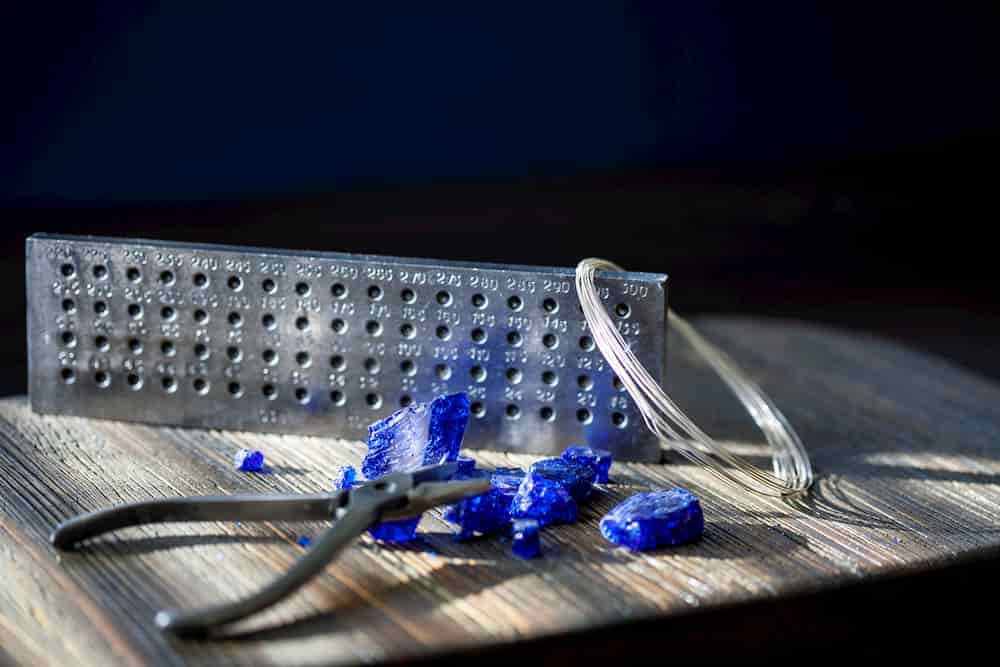
Jewelry hole board
Next, we divide our process because of the variety of filigree - solder and openwork. In both cases, the artist creates a sketch, works out the shape, drawing and general idea of the product. And the work of jewelers is already beginning here.
Openwork filigree
For a product with an openwork filigree, a tin mold is tapped, according to a given sketch, on which a protective coating is applied. The contours of the drawing are outlined with measuring tools.
The jeweler cuts the previously prepared filigree with scissors on metal and forms, with the help of tweezers, countless different curls. Silver lace is laid out from the curls, with precise movements, tweezers and glue, bringing to life what the artist intended. When the drawing is fully assembled, the jeweler prepares the product for the next stage, fastening the filigree with a steel wire.
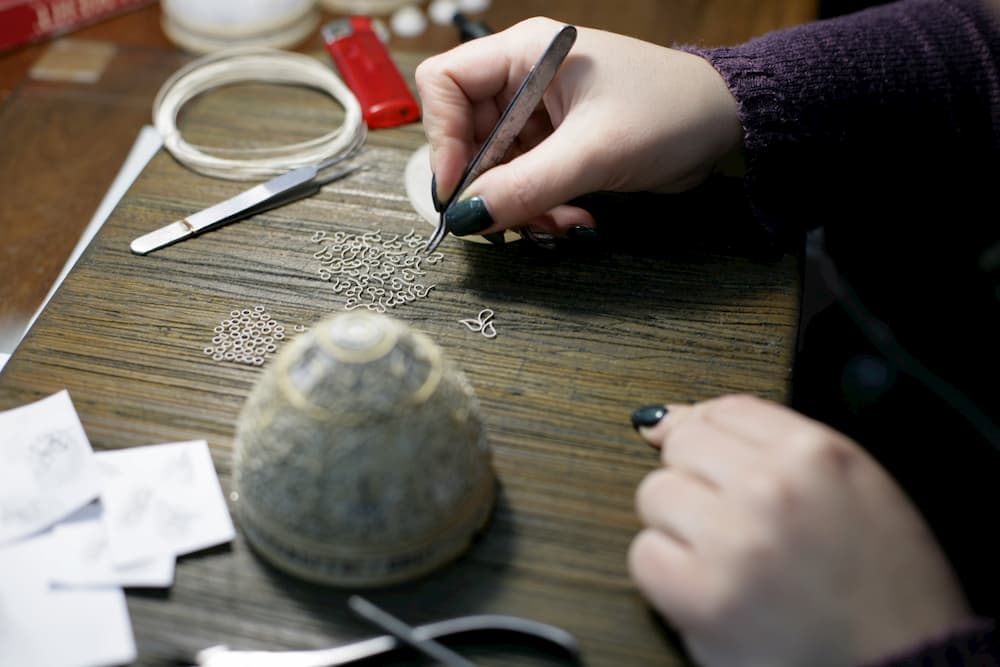
Scrolls of the filigree
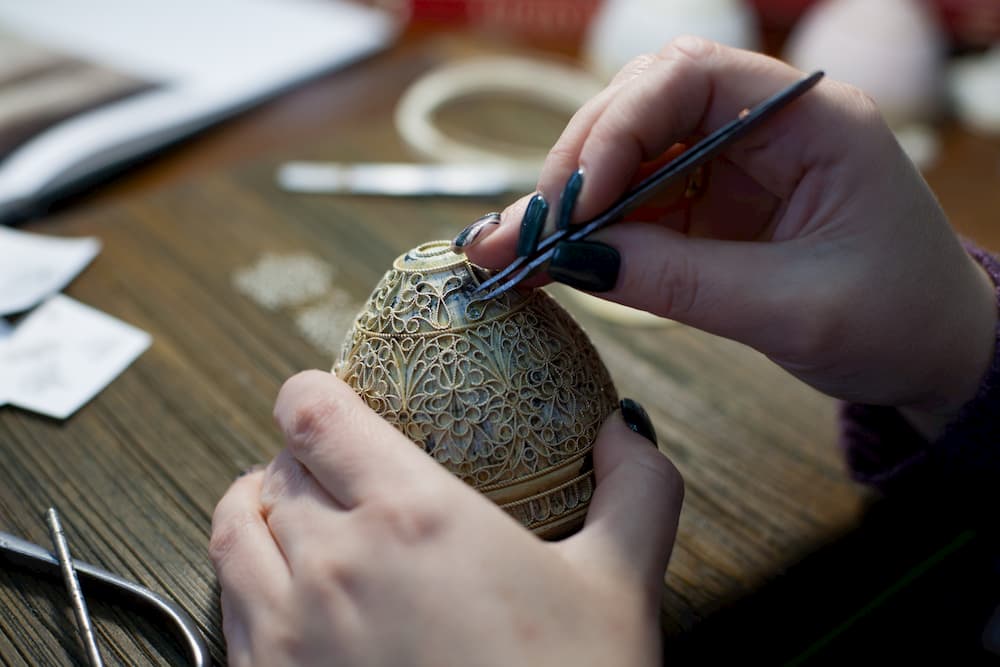
Curls putting
At this stage, the filigree pattern is put on a tin mold and connected with glue - if we start soldering the product, the glue will burn and the entire filigree will crumble. To prevent this from happening, we sprinkle all the joints of the pattern with solder. Then the master masterfully begins to connect the silver curls with a fiery flame, carefully watching over a very responsible process and adding solder in time if necessary. After soldering is completed, the product is carefully released from the mold. The parts of the product are also soldered together.
The jeweler bleaches, rinses and dries the resulting filigree base, the metal is ground. As a result, the product is transferred by the artist to the enamellers for a very important stage. One wrong movement of the hands can lead to a sad result – the previous labors of the masters may be in vain.
Solder filigree
The solder filigree is typed on a thin metal base, to which it will be soldered - unlike the openwork filigree - there the filigree is removed from the base. According to the sketch, the jeweler artist begins to weave a filigree ornament. Each curl is carefully selected and shaped to preserve the lines and movements defined in the sketch. The master lays out a filigree drawing with precise movements of his hands using tweezers and glue.
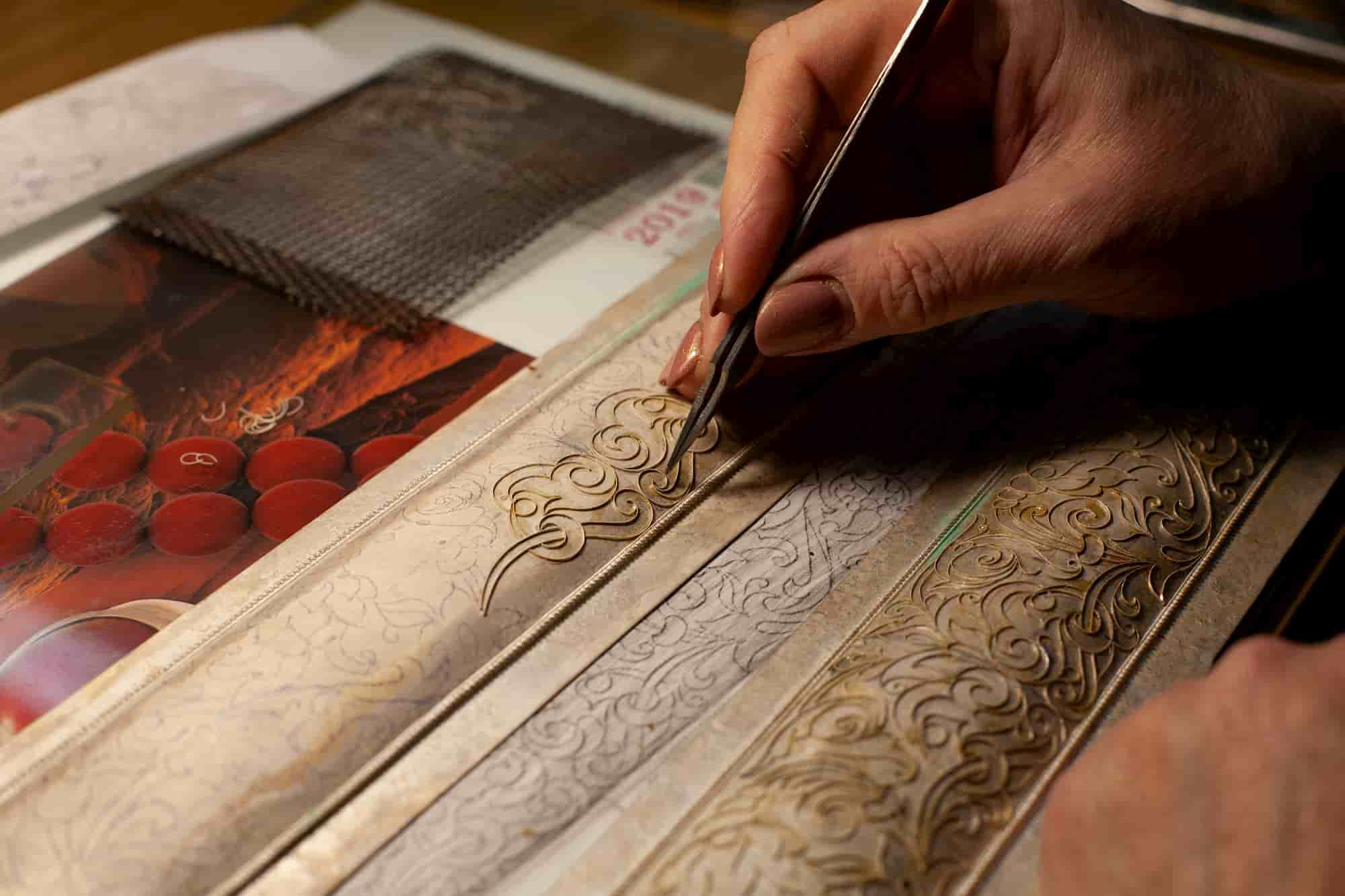
Then, with a fiery flame, the jeweler combines the ornate silver weaves with a silver base. The soldering principle is similar to that of an openwork chain. After that, the product, or rather parts of the future product, are transferred to the skillful hands of the enamellers.
This is how the filigree lace is created in our workshop. As you can see, this is a very painstaking, multi–day process. Thanks to the subtlety and docility of the filigree, we can very elegantly display a drawing or pattern, preserving all the lines set by the light hand of the artist. But there is another side of the coin here: delicate filigree can also be burned very easily during soldering, and you will have to start all over again. Therefore, this jewelry work cannot be carried out conscientiously without proper professionalism and experience.
The main tools of a jeweler in working with a filigree: jewelry tweezers and metal scissors.

Scissors for metal

Jewelry Tweezers
